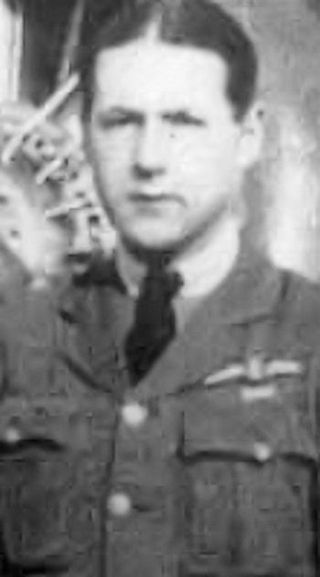Related Research Articles
Lieutenant Gerald Alfred Birks was a Canadian First World War fighter ace credited with twelve aerial victories while serving in the British Royal Flying Corps and Royal Air Force.
Captain Samuel Frederick Henry "Siffy" Thompson was a British World War I two-seater fighter ace who, in conjunction with his observer-gunners, was credited with thirty aerial victories before being shot down and killed. Despite having an active fighter career of only five months, he reached the rank of captain and was awarded two British military decorations.
Lieutenant Philip Terence Holligan was a British World War I flying ace credited with six aerial victories.
Lieutenant Robert McLaughlin was a British World War I flying ace credited with six aerial victories.
Flight Lieutenant William Geoffrey Meggitt was a British World War I flying ace credited with six aerial victories.
Lieutenant James McDonald was a British World War I flying ace credited with eight aerial victories.

Lieutenant Kenneth Russell Unger was an American World War I flying ace credited with fourteen aerial victories. His candidacy rejected by his own nation, Unger applied to the British Royal Flying Corps for military pilot training in June 1917. Once trained, he was assigned to the Royal Naval Air Service (RNAS). As the RNAS was merged into the Royal Air Force, Unger scored his aerial victories between 26 June and 1 November 1918. In later life, Unger remained involved in aviation and served again during World War II. He also joined the U.S. Navy Reserves, rising to the rank of rear admiral.
Captain John Ellis Langford Hunter was a British World War I flying ace credited with 13 confirmed aerial victories.
Second Lieutenant Francis James Ralph was a British World War I ace credited with 13 confirmed aerial victories over German fighter aircraft while flying as an aerial observer.
Lieutenant William Thomas Barnes was an English World War I flying ace. He served as an observer/gunner in Bristol F.2 Fighters, gaining, in conjunction with his pilots, nine confirmed aerial victories over German Fokker D.VII fighter planes. Post-war he served in the Royal Irish Constabulary and was killed in the Kilmichael ambush on 28 November 1920.
Squadron Leader Walter Macfarlane Carlaw was a Scottish flying ace who served during World War I, and was credited with 12 confirmed aerial victories. He returned to RAF service during World War II.
Captain John Steel Ralston was a Scottish World War I war hero and flying ace. After winning a Military Cross in 1916 for lifesaving gallantry while serving in the infantry, he was credited with 12 official aerial victories as a fighter pilot before he was killed in action.
Dudley Lloyd-Evans, was a Welsh-born soldier, airman and flying ace. After being decorated for his infantry service during the First World War, he transferred to aviation, was credited with eight official aerial victories, and again won military honours for his valour. He remained in the Royal Air Force until the end of the Second World War.
Captain Adrian James Boswell Tonks was a British First World War flying ace. He was officially credited with twelve aerial victories, and was twice awarded the Distinguished Flying Cross.
Colonel Dennis Edward Francis Waight was a British Army professional infantryman. After being decorated for valor while serving as a fusilier early in World War I, he flew in combat as an aerial observer until war's end. No details of his transfer and training are known; however, he was credited with 12 aerial victories, making him a flying ace.
Captain Alexander Beck was an Anglo-Argentine aviator during World War I. He was an underage enlistee who went on to become a flying ace credited with 11 official aerial victories.
Lieutenant Thomas Montagu Harries was a Scottish World War I flying ace credited with 11 aerial victories. He was the second scoring ace using the Sopwith 1½ Strutter; he then also became an ace on the Royal Aircraft Factory SE.5a.
Captain Frederick Elliott Brown was a Canadian World War I flying ace credited with 10 aerial victories. He returned to military service during World War II.
Sergeant James Grant was a Scottish flying ace credited with eight aerial victories during World War I. The teenage non-commissioned officer was a rarity among aces. While most were commissioned officers and fighter pilots, he was an observer and gunner aboard a bomber. Nonetheless, his accuracy with a machine gun and his doughtiness led to his being awarded the Distinguished Flying Medal when he was only 18 years old.
Lieutenant Malcolm Plaw MacLeod (1897–1960) was a Canadian flying ace. He was credited with seven aerial victories scored during the closing days of World War I. He then returned to Canada to complete his education and work as a stockbroker until World War II, when he served in the Royal Canadian Air Force for the war's duration.
References
- 1 2 "Christopher James Shannon". The Aerodrome. 2016. Retrieved 24 January 2016.
- ↑ "No. 31098". The London Gazette (Supplement). 31 December 1918. p. 98.